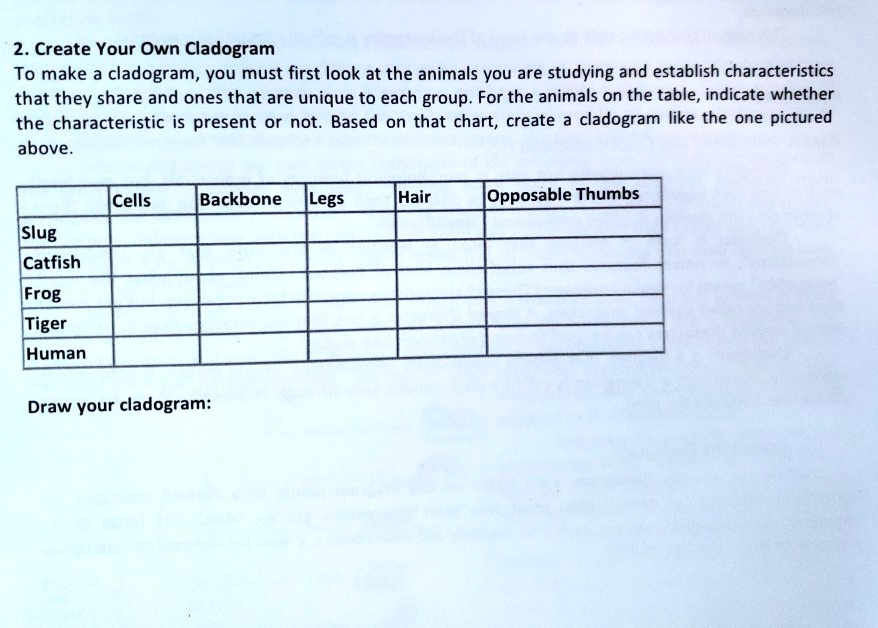Create Your Own Cladogram To make a cladogram, you must first look at the animals you are studying and establish characteristics that they share and ones that are unique to each group. For the animals on the table, indicate whether the characteristic is present or not. Based on that chart, create a cladogram like the one pictured above. Cells Backbone Legs Hair Opposable Thumbs Slug Catfish Frog Tiger Human Draw your cladogram:

The Correct Answer and Explanation is:
Here’s your custom cladogram—ready to reveal how life branched and branched again.
A cladogram is a branching diagram that illustrates the evolutionary relationships among organisms based on shared characteristics. For the animals listed (slug, catfish, frog, tiger, human), we begin with the most basic feature and progress toward traits that are increasingly specific.
All organisms listed possess cells. That unites all life, so this trait is placed at the root of the cladogram. From there, we look for the next distinguishing feature—backbones. The slug lacks a backbone, making it the first branch off the main line. Catfish, frog, tiger, and human share a backbone, so they stay on the main line.
Next comes legs. Catfish have backbones but no legs, so they branch off next. Frog, tiger, and human possess legs and remain together.
The next trait is hair. Frogs lack hair, so they split from tiger and human. Lastly, among the remaining organisms, opposable thumbs are the defining feature. Tigers do not have opposable thumbs, while humans do, so they are the final branch in this evolutionary sequence.
So the cladogram shows: Slug → Catfish → Frog → Tiger → Human Each branch marks a new trait: backbone, legs, hair, and opposable thumbs.
This sequence mirrors evolutionary history by grouping organisms that share derived characteristics. It helps us visualize relationships not only by physical appearance but by genetic and evolutionary data. The further along two organisms share a branching point, the more recent their common ancestor. This cladogram demonstrates how humans are most closely related to tigers among the list, and most distantly related to slugs. Such diagrams are powerful tools in biology for organizing and interpreting biodiversity and the evolutionary links that connect us all.

